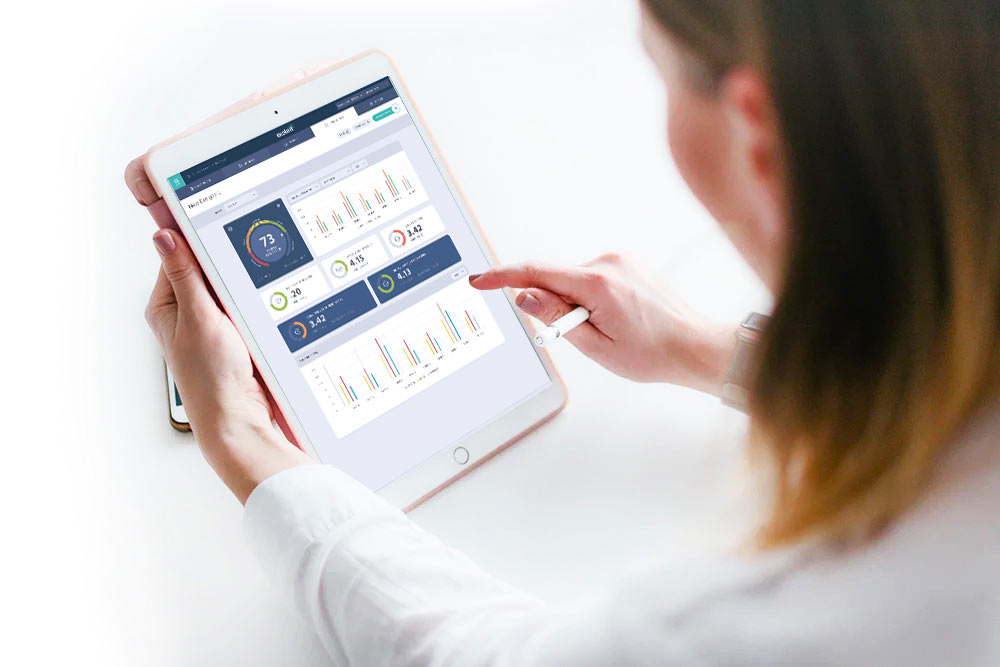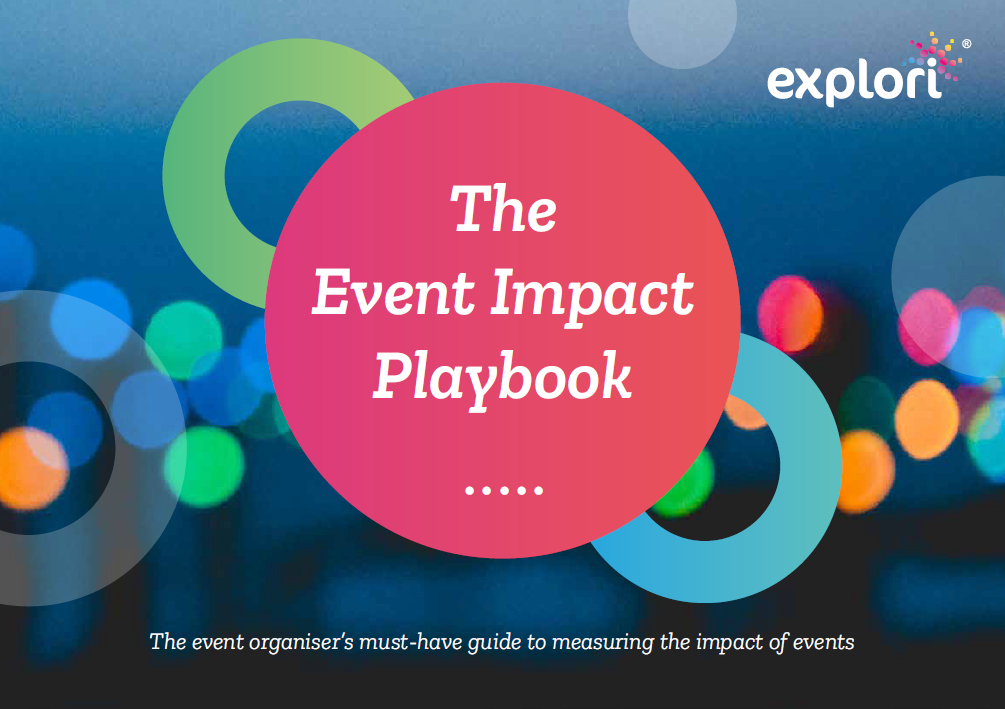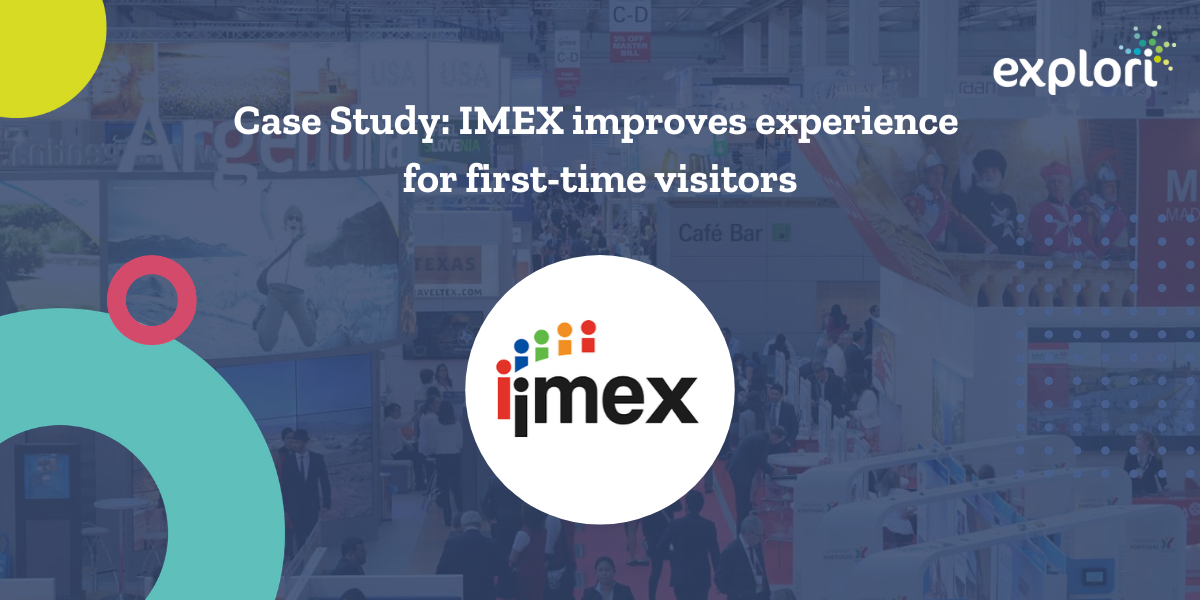
Explori Blog
Updates, announcements and articles you need from the Explori—all in one place.


Feedback surveys? Only for lovers or haters?
Apr 6, 2020
Whilst more and more event planners are turning to online surveys to gauge customer feedback, some still have concerns about the validity of the data if they are planning to use it to inform their event strategy - are they right? New clients sometimes ask us if people are only motivated to fill in online surveys if they’ve got something really good or really bad to say, missing the views of the “average” attendee. So what does the data say? Using a sample of 146,000 attendees who completed post-show surveys, from the database of over two and a half a million survey responses collected by Explori in the last 12 months, we examined the response to the question: how likely are you to recommend the event to a colleague / friend, to find the Net Promoter Scores (NPS). NPS response is divided into three categories: Those who give scores of 0-6 out of 10 are classed as detractors Scores of 7-8 are passives or neutral Scores of 9-10 are promoters In our sample, 11% fell in the detractor camp, 42% in the promoter band and 47% in the neutral or passive band. So there was certainly a large group of people with middle ground views who had chosen to give feedback. With almost a third of respondents sitting happily in the neutral camp, (with scores of 7 and 8) and another 15% “a little underwhelmed” with scores of 5 or 6, this group is more sizeable than both the “lovers” or the “haters”. When it comes to post-show online surveys, “Average Jo” is quite happy to give her opinion. Online surveys vs face-to-face But we also see more of a spread to the extremes of the scale, including 3.5% rating the show they attended as 0 or 1 out of 10. It is this group that can sometimes be under-represented in face-to-face surveys conducted during the event. By collecting your feedback online after the event, you have given your attendees the fullest possible time to form their opinion of the event. In this respect it could be argued that there is more validity to their response than one taken part-way through the experience. Think about the very direct feedback you get from your attendees (whether they will attend next year). Do you find their responses are more neutral (don’t know whether they will or not) at the beginning of the event and more polarised (they definitely will not) towards the end or shortly after the event? Which do you feel most represents their “true” opinion? Social nicety also comes into play. Many people temper their opinions when they are talking to a real person – an unconscious attempt to protect the feelings of the interviewer, or to appear a better person before them. This can particularly impact responses to questions around income, job seniority and attitude towards professional development, where some answers are perceived to be more socially desirable than others. It also buffers the results against very low NPS scores. In results published by a UK research agency*, it appeared not a single respondent had given a score of 0 when surveyed face-to-face. You could address the “nice-factor” by placing self-serve terminals at your event in an area you are confident will attract the full spectrum of your attendees, but the cost of build and loss of prime space can make this unappealing. So should you be concerned if there is a variance between the data you get online and the data you would get face to face? Well not if you compare apples with apples; if you consistently collect your data in the same way, you are not going to run into problems when you compare year-on-year. You should also look for data that has been collected in the same way if you are want to benchmark externally. You know your audience – are there any groups through demographic, or line of work not accessible through email? Or are you are looking for the views of a vital subsection of your audience? Then consider combining online and offline research to help you meet your objectives. Agencies with experience of both, or online platforms with offline partners, will be able to deliver both and work the data to give meaningful comparisons. So in conclusion, online surveys are cost effective and getting increasingly sophisticated at capturing the full opinion spectrum from lovers to haters and everyone in between. Their big sample sizes lend themselves to detailed analysis and comparisons of the experience of segments of your visitors and they eliminate the “human” bias. But you may well find you get differing responses between any research conducted at the show and online after the show. It would be limiting to see either as being the “true” opinions of your delegates – they both need to be treated in context when you are drawing conclusions and compared against appropriate benchmarks to help you turn your data into something meaningful to your event strategy. Find out more about how you can incorporate attendee feedback into your event strategy.

Setting measurable event objectives
Mar 6, 2020
In order to measure the success of your event you need to know what success looks like for you. For your team. For your organisation. This begins with establishing clear and measurable objectives. For example, imagine you are organising a prospecting event for a SaaS business. You have 300 people attending who have demonstrated interest in the product your company offers. What would you set your objectives as? The temptation might be to accept the event objective as increasing sales. However, for most B2B businesses the sales cycles are often long with many different touchpoints in between. The most meaningful objectives for event teams are ones that can be measured a few days after the event. These demonstrate the true value of the channel and are the most useful for ensuring your events meet the needs of attendees and stakeholders alike. So if not 'increase sales' what objectives should you consider setting instead? Events are often part of a wider campaign of activities. In this case there might be a number of things happening including sales training, online demos, outbound marketing and more that are impacting sales revenue. Metrics that events teams can measure is an attendee's intention following their presence at an event. How has the event shifted their intention to act following an event. This is where the Explori event impact tree comes into play. There are four parts to the Explori impact tree that helps organisers set measurable objectives that link back to their company objectives. Company goal This is the fruit of your tree. You wouldn't plant an apple tree and expect to grow oranges. Equally you wouldn't organise an event to contribute to increased sales if the aim was to impact on staff retention. Start with the end in mind and build all your metrics out from this point. Cognitive goal What do you want your attendees to know when they leave your event? This will differ if you are thinking about your trade show booth vs an internal training event. This helps you laser focus on what you are teaching your attendees. It might be about updating the sales team on a new product or feature or increasing your prospect's understanding of what problem your product/service solves. Sentiment goal How do you want your attendees to feel after your event? Sentiment objectives are where we begin to get into measuring brand affinity. This is a fantastic opportunity to understand how events are used to communicate brand values to attendees. i.e. how many attendees believe your company is a leader in eco-technology? Behavioural goal What do your attendees intend to do after the event? This is critical. As described at the beginning of this post often the success of an event hangs on the number of sales, subscriptions or partnerships that have resulted. This is often a flawed approach as there are several touch points involved which aren't within the control of an events lead. Setting a behavioural objective such as intention to remain an employee of your company or intention to participate in a follow up meeting are a better indicator of the usefulness of the events channel. Establishing the correct objectives for your event is the first step to successfully measure your events. And the great thing about this structure is it can be easily incorporated into your humble survey. By requesting quantifiable feedback from your events you'll be able to build powerful insights which highlight the value of the events channel to your company's core objectives. Take your learning further by downloading the Event Impact Playbook.

IMEX optimises first-time visitor experience
Nov 29, 2019
Welcoming over 15,000 attendees, IMEX America aims to help meeting and event planners create powerful connections. Their objective for IMEX America 2019 was to better understand the experience of their visitors and exhibitors in relation to other events in the industry. Explori are the largest provider of trade show benchmarks across measures that include. Net Promoter Score, overall satisfaction, loyalty, event importance and more. These metrics are anonymised and incorporated into Explori’s global benchmarking dataset which allows organisers to compare their own event scores against an industry benchmark. IMEX GROUP traditionally used SurveyMonkey to measure the performance of their events however they wanted to understand how their scores on key metrics including Net Promoter Score compared to the industry. With over 3,000 trade shows in its dataset, Explori is able to provide organisers with global benchmarking data. This empowers organisers like IMEX GROUP to understand how they compare to competitors and provide insights into how they can improve their event to get and stay ahead. Download the IMEX case study here Of the 3,000+ events Explori benchmark, IMEX America ranked in the 99th percentile for visitor satisfaction. This demonstrates that their visitor satisfaction places them in the top one percent of all the trade shows Explori measures. For exhibitor satisfaction they ranked in the top 16% of the Explori dataset. Visitor loyalty (as measured by likelihood of return) scored 4.11 and for exhibitors this was even higher at 4.40. Scores for visitor and exhibitor loyalty both came in higher than average for their industry. Net Promoter Score is the measure of attendees who would recommend IMEX America to a colleague or a friend is ranked on a scale of -100 to +100. The industry average for trade show visitors recorded by Explori is +9 and for exhibitors -17. IMEX America scored +61 and +23 respectively. These findings supported IMEX’s understanding that they were delivering a strong event that catered to the needs of both its exhibitors and visitors. Filtering survey results revealed even deeper insights. The IMEX America team wanted to understand which attendees weren’t having the best experience and how they could improve this in 2020. Lottie Elson Associate Director of Marketing at IMEX GROUP said, “Explori’s research team flagged up an interesting theme in our post-show results. First time buyers had lower satisfaction scores than others in our attendee population. By filtering the report based on this attendee profile we found that this audience wanted slightly different information on how to navigate and make the most of their time at the event. They also wanted opportunities to network with other first time visitors. This has been a very useful insight which we will be using to improve the experience of our first time visitor buyers in 2020. And thanks to Explori’s intuitive platform we will be able to easily compare the satisfaction of first time visitor buyers in 2020 to our 2019 scores to see if we have succeeded in achieving our goal.”

Consumerization of B2B events: The shifting priorities of attendees
Jun 6, 2019
One of the highlights of last month’s Experiential Marketing Summit in Las Vegas was a benchmark study revealed by Sparks and Event Marketer about the consumerization of B2B events. When I compared some of their findings to Explori’s Global Visitor Insights report a clear difference emerged. When people attend trade shows they have different event expectations compared to when they attend brand-led events. In the US trade shows are still one of the most profitable B2B media strategies, generating over $13.2bn revenue in 2018. But all events aren’t made equal, and the data suggests nor are the people who attend them. In the Sparks report, they surveyed attendees at brand-led events (i.e. Dreamforce, AdobeMax, Google I/O and more) to understand what today’s attendees want from B2B events. Consumerization came out top as being highly important. However, Explori’s Global Visitor Insights (GVI) 2018/19 report demonstrated something quite different. If you exhibit regularly at events, or organise your own shows, you'll probably be surprised by what the data suggests. What is consumerization in the context of events? Consumerization (or festivalization) is a megatrend that exploded on the B2B event scene in 2016/17. A stream of articles and reports cited the changing face of B2B events influenced by what was happening in the consumer events space. The growth of the experiential economy has created a convergence point for businesses and the creative industries. B2B professionals have been exposed to the high-end production of festival style events such as South by Southwest and now expect a certain level of fun and enjoyment from conferences. B2B events have been challenged to adopt creative elements from consumer events in order to engage an audience who are becoming more distracted and fractured. It does however beg the question, are there some cases in which incorporating consumer elements is not required? Could it even be detrimental? What does the data say about consumerization in B2B events? The Sparks report found that, “while a significant 68% of B2B brands see consumerization as an important trend, an even higher percentage of attendees (77%) feel consumerization is important.” The data here reveals that attendees of brand-led events want to have festival-style elements woven into their experience. It appears they go to these events, not only to be informed but to be entertained. A different picture emerges in the GVI report. We asked 13,000 trade show attendees if they would spend more time at shows that are more entertaining. Only 24% of people in developed countries agreed*. We also asked if they thought events should be more like festivals. The results showed a much lower interest in introducing consumer elements to the trade show experience compared to brand-led events. Even amongst the youngest cohort of our study. Only 36% of under 24s and 33% of 25-34s agreed trade shows should be more like festivals. This disparity surprised me at first. Why do the expectations of someone attending a trade show appear to be so different from when they attend a brand-led event? A deeper dive into the data revealed what drives this. The shifting priorities of event attendees In brand-led events, Sparks found that the top 3 priorities for attendees are: Education/Professional Development (73%) Networking (68%) See new products (55%) However, at trade shows we found the top 3 priorities are: To see new products and services (62%) To keep up to date with market trends (61%) Networking (50%) 59% of our respondents agreed that it didn’t matter whether or not trade shows were entertaining as long as they could achieve their business objectives. It appears that trade show attendees have quite clear cut goals when it comes to attending events. Fun is a “nice to have” but when it comes down to it, the real measure of success is whether or not they find the suppliers and solutions their business needs. On the other side, brand-led event attendees want to be educated and increase their network. They also want that to be wrapped in an experience that echoes consumer events with more unique event spaces, innovative environments, autonomy over how they learn and interact and more creative F&B. For event marketers/organisers utilising a mix of trade shows and brand-led events, this is something to bear in mind. If you’re hosting or sponsoring a brand-led event it may be more beneficial to focus on the experience of your event or stand in order to satisfy attendees who expect to be entertained. Alternatively if you’re exhibiting at a trade show you may want to strip back the experiential elements and focus on showcasing the product/service you offer in an innovative way to converge with attendee expectations. It’s not a one size fits all approach. It’s important to consider whether throwing in consumer elements across all your events, regardless of format is going to deliver the best return. In order to cultivate an event strategy that leaves a lasting impact; tap into the unique expectations of attendees and tailor your strategy to suit. Download the full Global Visitor Insights report here.
.png?width=150&height=61&name=explori_logo%20(1).png)